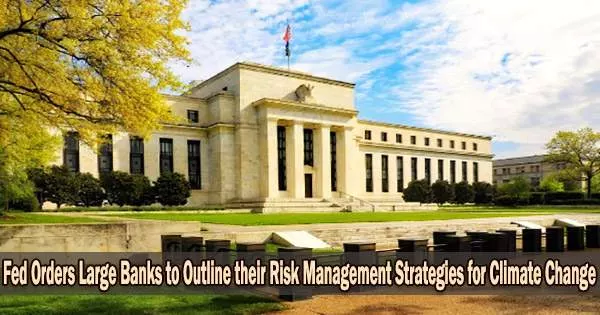According to the specifics of a pilot program the Federal Reserve published Tuesday (January 17, 2023), the six major banks in the United States have until the end of July to demonstrate the effect that climate change could have on their operations.
The institutions are required to outline the potential effects that calamities like floods, wildfires, hurricanes, heat waves, and droughts could have on their loan portfolios and assets in commercial real estate. A hypothetical scenario focuses on events in the Northeastern U.S.
The two exercises resemble one another, but the climate scenario testing are distinct from the required bank stress tests, which assess preparedness for financial and economic catastrophes.
“The Fed has narrow, but important, responsibilities regarding climate-related financial risks to ensure that banks understand and manage their material risks, including the financial risks from climate change,” Fed Vice Chair for Supervision Michael S. Barr said. “The exercise we are launching today will advance the ability of supervisors and banks to analyze and manage emerging climate-related financial risks.”
The analysis is at least three years in the making.
The potential of the Fed looking into how prepared the institutions it regulates are for economic effects from climate change was first raised in a financial stability study in late 2020. That came a year after Fed Vice Chair Lael Brainard first brought up the issue.
The Fed has narrow, but important, responsibilities regarding climate-related financial risks to ensure that banks understand and manage their material risks, including the financial risks from climate change. The exercise we are launching today will advance the ability of supervisors and banks to analyze and manage emerging climate-related financial risks.
Michael S. Barr
However, Chairman Jerome Powell recently vowed the central bank would not become a “climate policymaker” despite the new program’s efforts.
The analysis takes a two-pronged approach, looking at a “physical risk” perspective, or the harm to people and property from unexpected climate-related events, and “transitions risks” associated with the costs of moving to a zero-emissions economy by 2050.
Participating banks include Bank of America, Citigroup, Goldman Sachs, JPMorgan Chase, Morgan Stanley and Wells Fargo. The summary, which won’t include details about particular institutions’ responses, is anticipated to be made public by the end of the year after the submission deadline of July 31.
A more detailed scenario that the banks should address was not described in the study that was made public on Wednesday. However, it did say it would entail examining the impact on residential and commercial real estate portfolios of “risk scenarios with different levels of severity” impacting the northeast.
In addition, banks are being asked to “consider the impact of additional physical risk shocks for their real estate portfolios in another region of the country.”
The transition risk component will concentrate on how the move to achieve net-zero greenhouse gas emissions by 2050 might affect corporate loans and commercial real estate.
The summary data provided by the banks regarding how they are incorporating climate risks into their financial planning will be the main focus of the final report. Estimates of the overall possible damages resulting from the fictitious occurrences won’t be provided.
















